"Information": models, code, and papers
JSRT: James-Stein Regression Tree
Oct 18, 2020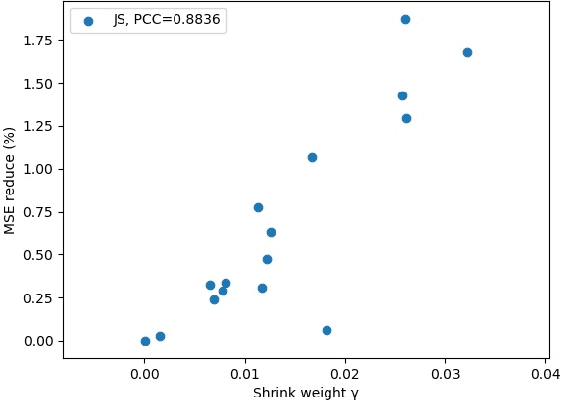
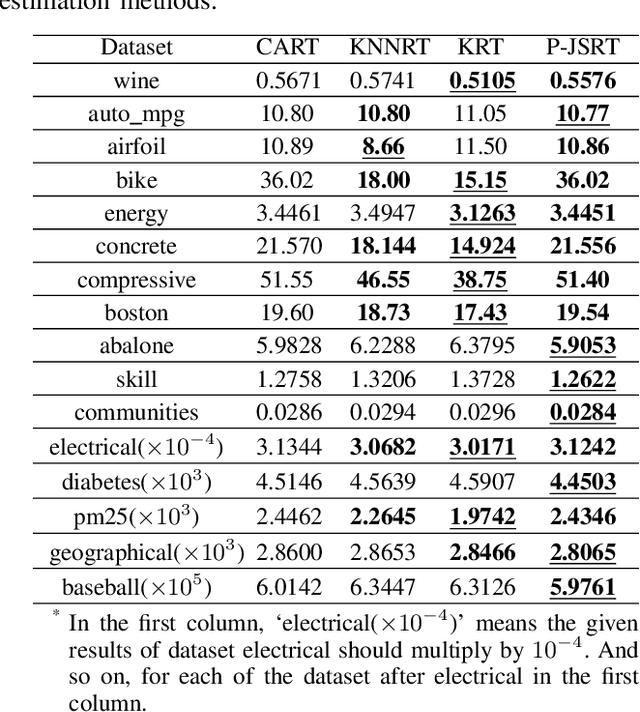
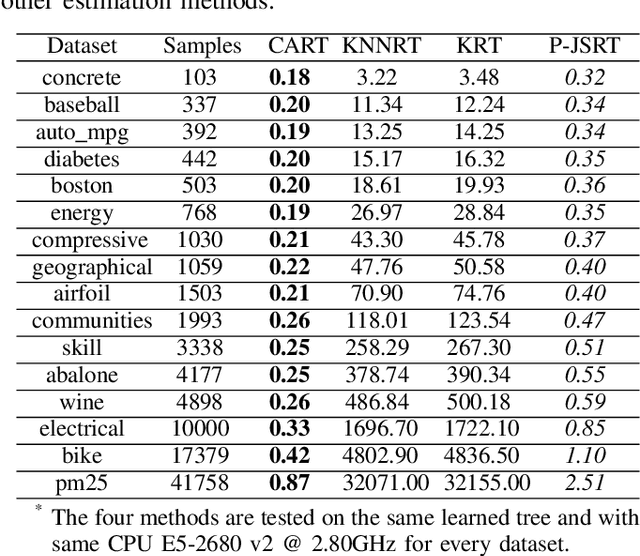
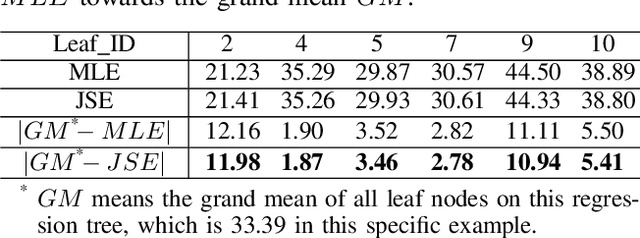
Regression tree (RT) has been widely used in machine learning and data mining community. Given a target data for prediction, a regression tree is first constructed based on a training dataset before making prediction for each leaf node. In practice, the performance of RT relies heavily on the local mean of samples from an individual node during the tree construction/prediction stage, while neglecting the global information from different nodes, which also plays an important role. To address this issue, we propose a novel regression tree, named James-Stein Regression Tree (JSRT) by considering global information from different nodes. Specifically, we incorporate the global mean information based on James-Stein estimator from different nodes during the construction/predicton stage. Besides, we analyze the generalization error of our method under the mean square error (MSE) metric. Extensive experiments on public benchmark datasets verify the effectiveness and efficiency of our method, and demonstrate the superiority of our method over other RT prediction methods.
Mapless-Planner: A Robust and Fast Planning Framework for Aggressive Autonomous Flight without Map Fusion
Nov 11, 2020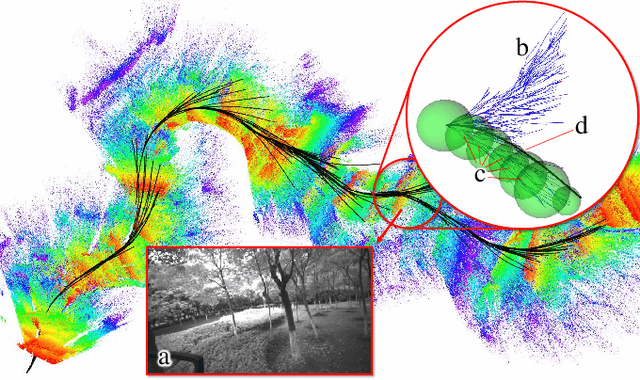
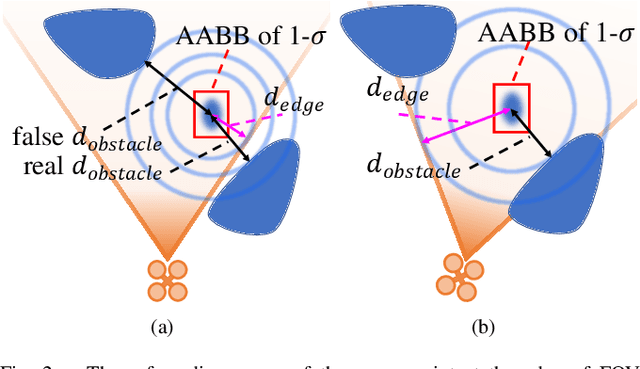
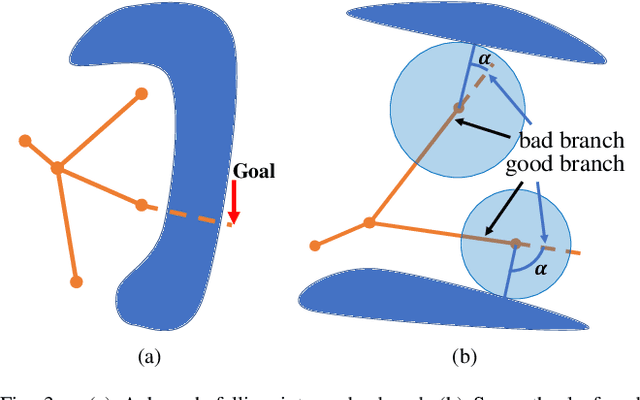
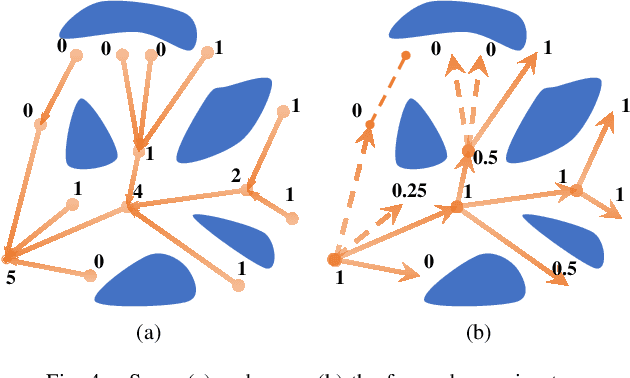
Maintaining a map online is resource-consuming while a robust navigation system usually needs environment abstraction via a well-fused map. In this paper, we propose a mapless planner which directly conducts such abstraction on the unfused sensor data. A limited-memory data structure with a reliable proximity query algorithm is proposed for maintaining raw historical information. A sampling-based scheme is designed to extract the free-space skeleton. A smart waypoint selection strategy enables to generate high-quality trajectories within the resultant flight corridors. Our planner differs from other mapless ones in that it can abstract and exploit the environment information efficiently. The online replan consistency and success rate are both significantly improved against conventional mapless methods.
A Novel Privacy-Preserved Recommender System Framework based on Federated Learning
Nov 11, 2020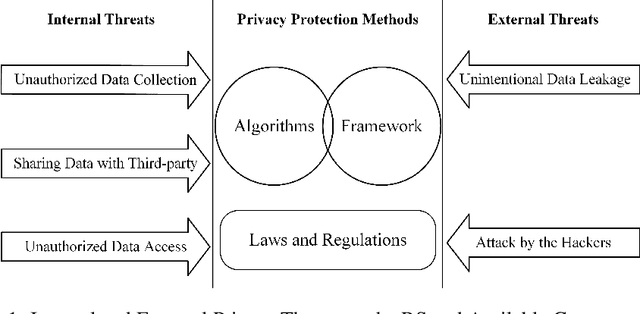
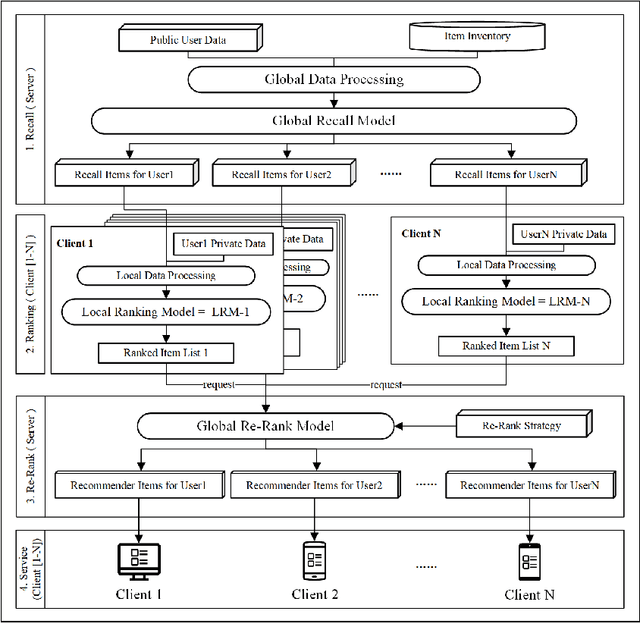
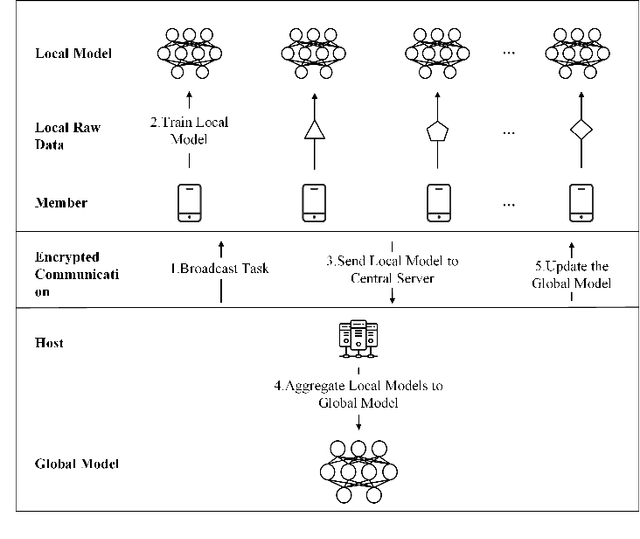
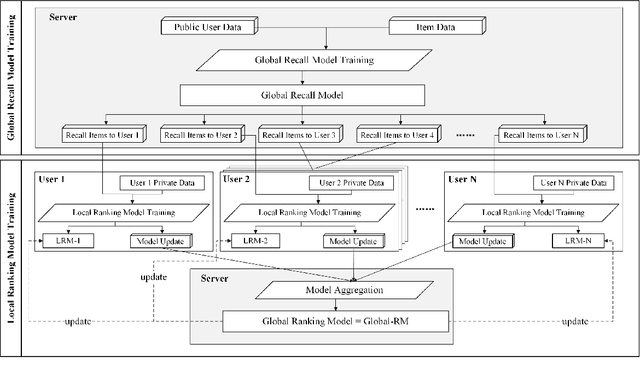
Recommender System (RS) is currently an effective way to solve information overload. To meet users' next click behavior, RS needs to collect users' personal information and behavior to achieve a comprehensive and profound user preference perception. However, these centrally collected data are privacy-sensitive, and any leakage may cause severe problems to both users and service providers. This paper proposed a novel privacy-preserved recommender system framework (PPRSF), through the application of federated learning paradigm, to enable the recommendation algorithm to be trained and carry out inference without centrally collecting users' private data. The PPRSF not only able to reduces the privacy leakage risk, satisfies legal and regulatory requirements but also allows various recommendation algorithms to be applied.
Agent Incentives: A Causal Perspective
Feb 02, 2021

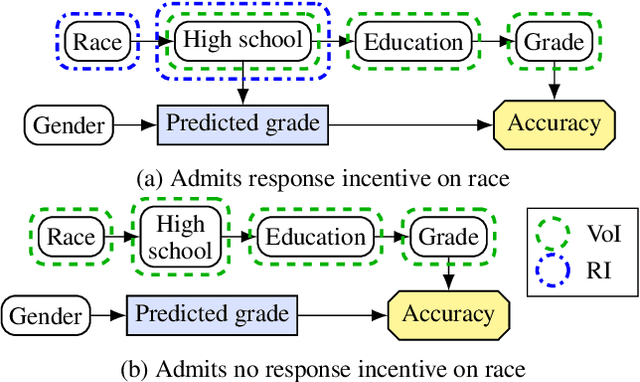
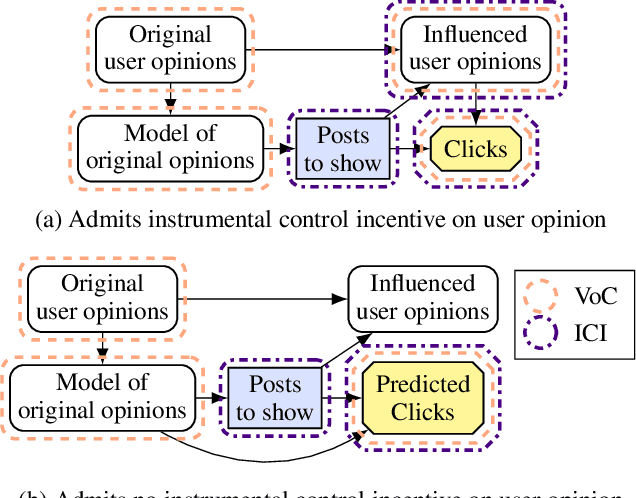
We present a framework for analysing agent incentives using causal influence diagrams. We establish that a well-known criterion for value of information is complete. We propose a new graphical criterion for value of control, establishing its soundness and completeness. We also introduce two new concepts for incentive analysis: response incentives indicate which changes in the environment affect an optimal decision, while instrumental control incentives establish whether an agent can influence its utility via a variable X. For both new concepts, we provide sound and complete graphical criteria. We show by example how these results can help with evaluating the safety and fairness of an AI system.
Evaluating the performance of personal, social, health-related, biomarker and genetic data for predicting an individuals future health using machine learning: A longitudinal analysis
Apr 26, 2021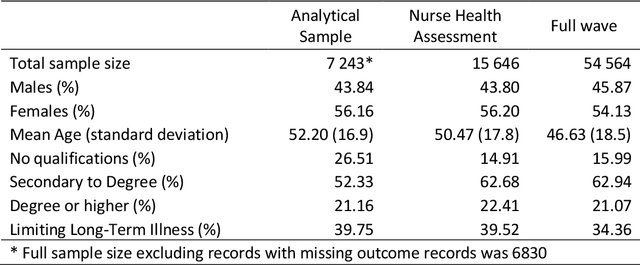
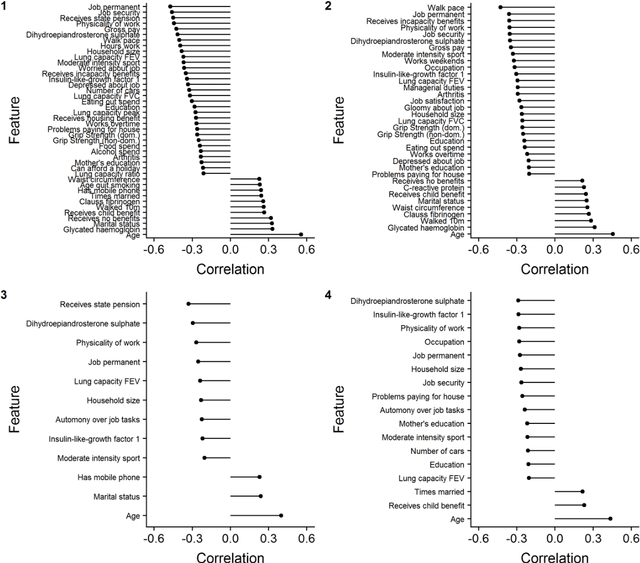
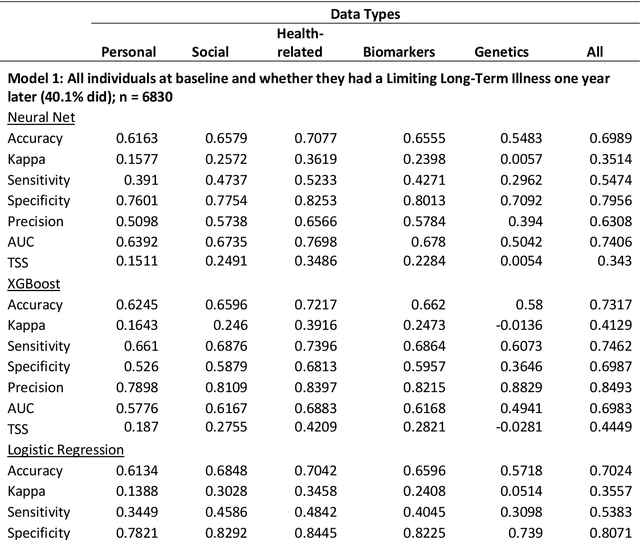
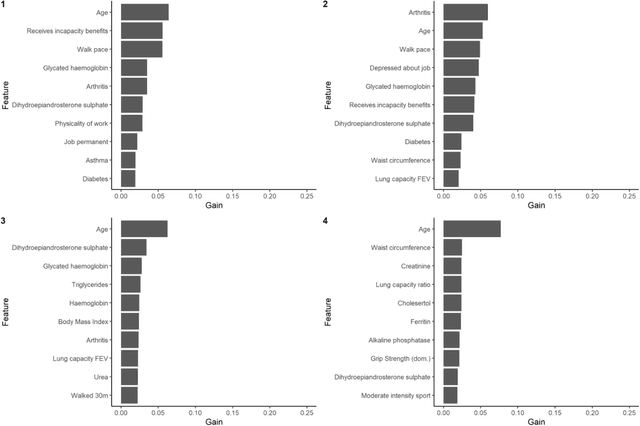
As we gain access to a greater depth and range of health-related information about individuals, three questions arise: (1) Can we build better models to predict individual-level risk of ill health? (2) How much data do we need to effectively predict ill health? (3) Are new methods required to process the added complexity that new forms of data bring? The aim of the study is to apply a machine learning approach to identify the relative contribution of personal, social, health-related, biomarker and genetic data as predictors of future health in individuals. Using longitudinal data from 6830 individuals in the UK from Understanding Society (2010-12 to 2015-17), the study compares the predictive performance of five types of measures: personal (e.g. age, sex), social (e.g. occupation, education), health-related (e.g. body weight, grip strength), biomarker (e.g. cholesterol, hormones) and genetic single nucleotide polymorphisms (SNPs). The predicted outcome variable was limiting long-term illness one and five years from baseline. Two machine learning approaches were used to build predictive models: deep learning via neural networks and XGBoost (gradient boosting decision trees). Model fit was compared to traditional logistic regression models. Results found that health-related measures had the strongest prediction of future health status, with genetic data performing poorly. Machine learning models only offered marginal improvements in model accuracy when compared to logistic regression models, but also performed well on other metrics e.g. neural networks were best on AUC and XGBoost on precision. The study suggests that increasing complexity of data and methods does not necessarily translate to improved understanding of the determinants of health or performance of predictive models of ill health.
An Efficient Forecasting Approach to Reduce Boundary Effects in Real-Time Time-Frequency Analysis
Feb 14, 2021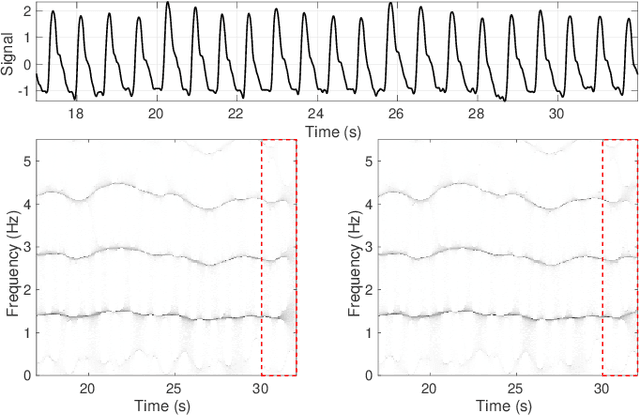
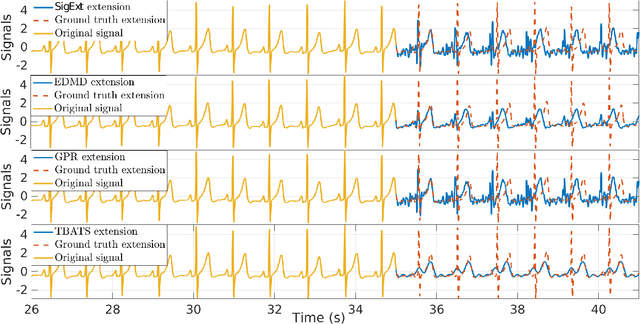
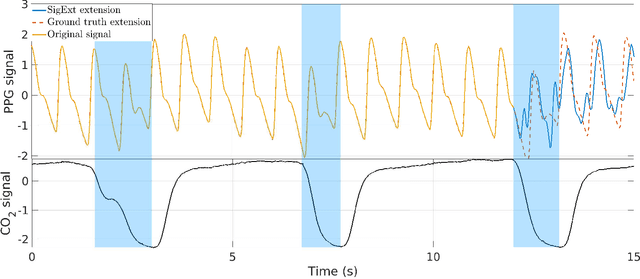
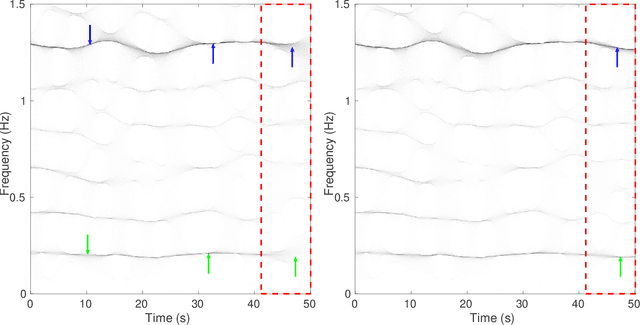
Time-frequency (TF) representations of time series are intrinsically subject to the boundary effects. As a result, the structures of signals that are highlighted by the representations are garbled when approaching the boundaries of the TF domain. In this paper, for the purpose of real-time TF information acquisition of nonstationary oscillatory time series, we propose a numerically efficient approach for the reduction of such boundary effects. The solution relies on an extension of the analyzed signal obtained by a forecasting technique. In the case of the study of a class of locally oscillating signals, we provide a theoretical guarantee of the performance of our approach. Following a numerical verification of the algorithmic performance of our approach, we validate it by implementing it on biomedical signals.
Understanding Negations in Information Processing: Learning from Replicating Human Behavior
Apr 18, 2017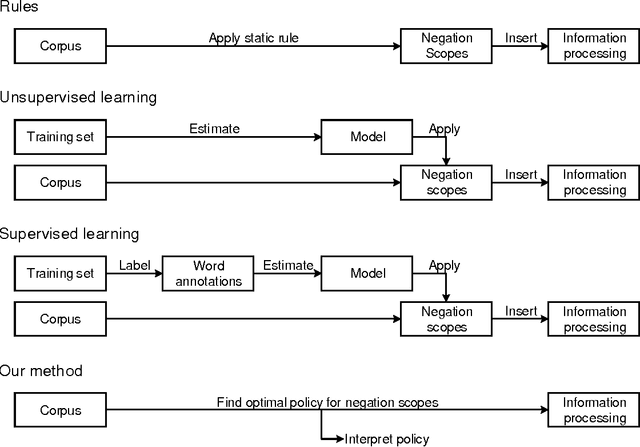
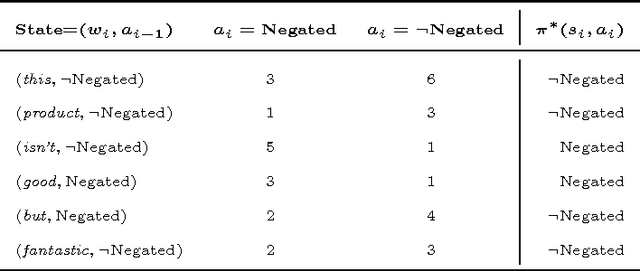
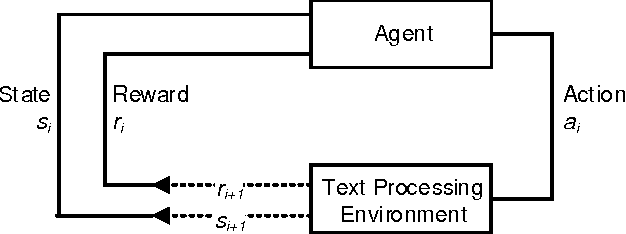

Information systems experience an ever-growing volume of unstructured data, particularly in the form of textual materials. This represents a rich source of information from which one can create value for people, organizations and businesses. For instance, recommender systems can benefit from automatically understanding preferences based on user reviews or social media. However, it is difficult for computer programs to correctly infer meaning from narrative content. One major challenge is negations that invert the interpretation of words and sentences. As a remedy, this paper proposes a novel learning strategy to detect negations: we apply reinforcement learning to find a policy that replicates the human perception of negations based on an exogenous response, such as a user rating for reviews. Our method yields several benefits, as it eliminates the former need for expensive and subjective manual labeling in an intermediate stage. Moreover, the inferred policy can be used to derive statistical inferences and implications regarding how humans process and act on negations.
Target Transformed Regression for Accurate Tracking
Apr 01, 2021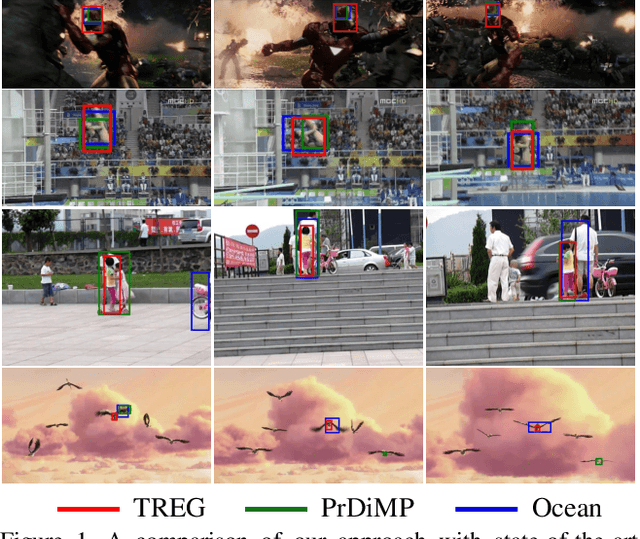

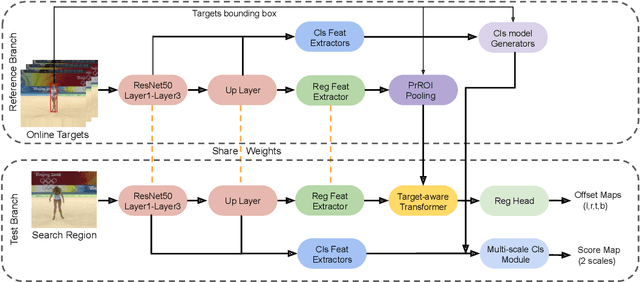
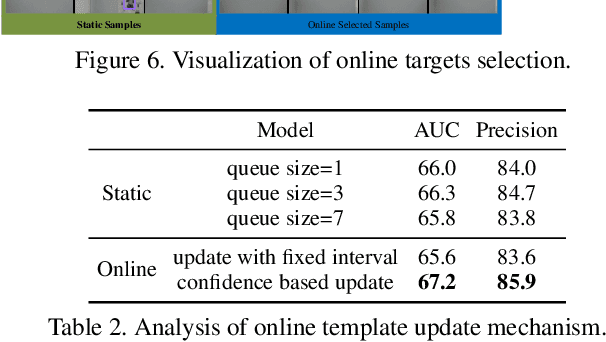
Accurate tracking is still a challenging task due to appearance variations, pose and view changes, and geometric deformations of target in videos. Recent anchor-free trackers provide an efficient regression mechanism but fail to produce precise bounding box estimation. To address these issues, this paper repurposes a Transformer-alike regression branch, termed as Target Transformed Regression (TREG), for accurate anchor-free tracking. The core to our TREG is to model pair-wise relation between elements in target template and search region, and use the resulted target enhanced visual representation for accurate bounding box regression. This target contextualized representation is able to enhance the target relevant information to help precisely locate the box boundaries, and deal with the object deformation to some extent due to its local and dense matching mechanism. In addition, we devise a simple online template update mechanism to select reliable templates, increasing the robustness for appearance variations and geometric deformations of target in time. Experimental results on visual tracking benchmarks including VOT2018, VOT2019, OTB100, GOT10k, NFS, UAV123, LaSOT and TrackingNet demonstrate that TREG obtains the state-of-the-art performance, achieving a success rate of 0.640 on LaSOT, while running at around 30 FPS. The code and models will be made available at https://github.com/MCG-NJU/TREG.
MONAH: Multi-Modal Narratives for Humans to analyze conversations
Jan 20, 2021
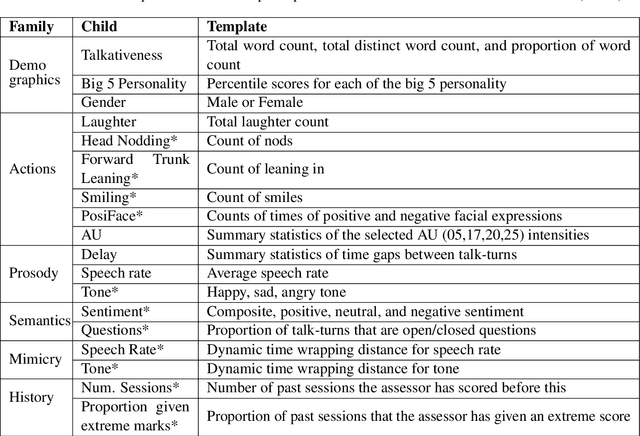
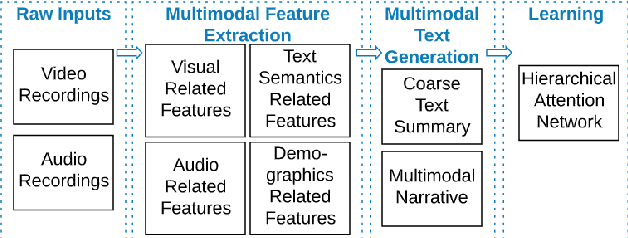
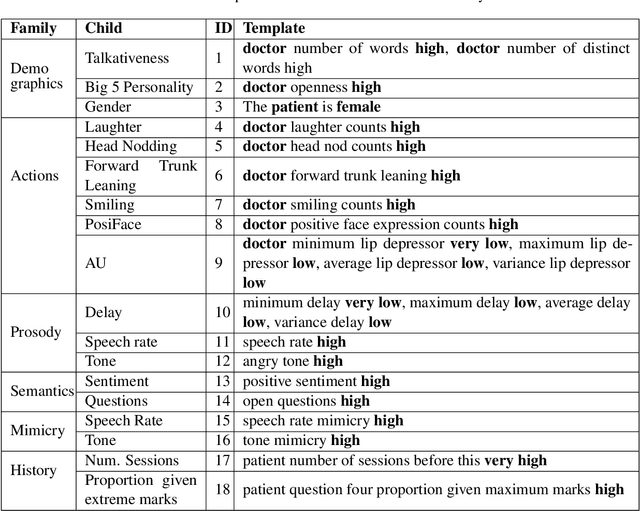
In conversational analyses, humans manually weave multimodal information into the transcripts, which is significantly time-consuming. We introduce a system that automatically expands the verbatim transcripts of video-recorded conversations using multimodal data streams. This system uses a set of preprocessing rules to weave multimodal annotations into the verbatim transcripts and promote interpretability. Our feature engineering contributions are two-fold: firstly, we identify the range of multimodal features relevant to detect rapport-building; secondly, we expand the range of multimodal annotations and show that the expansion leads to statistically significant improvements in detecting rapport-building.
Online Multiple Object Tracking with Cross-Task Synergy
Apr 01, 2021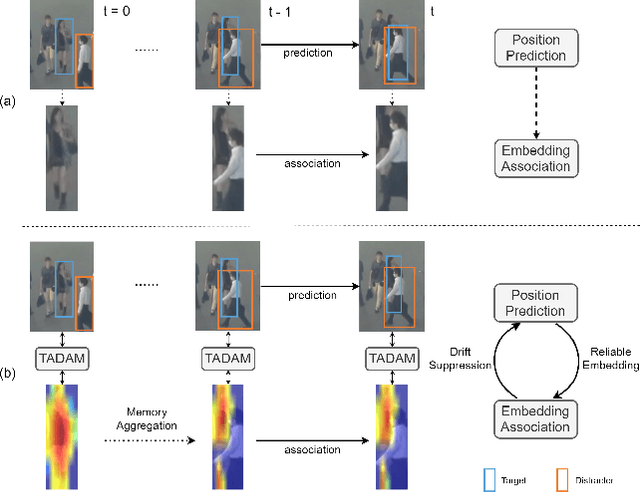
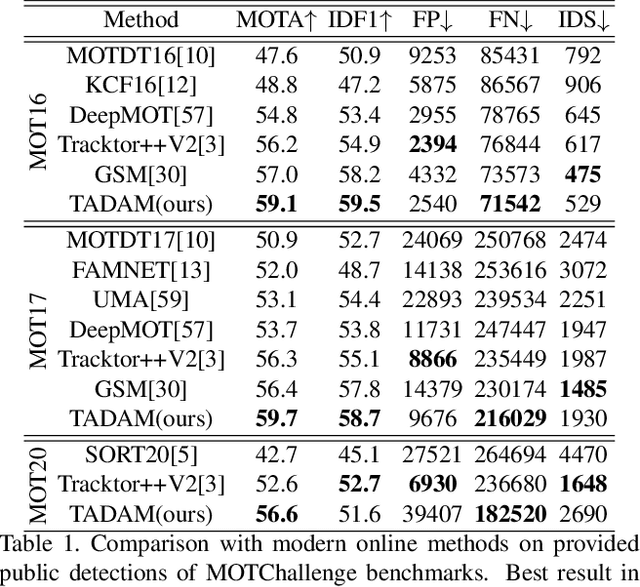
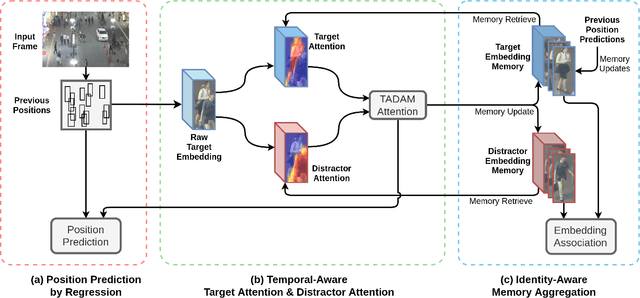
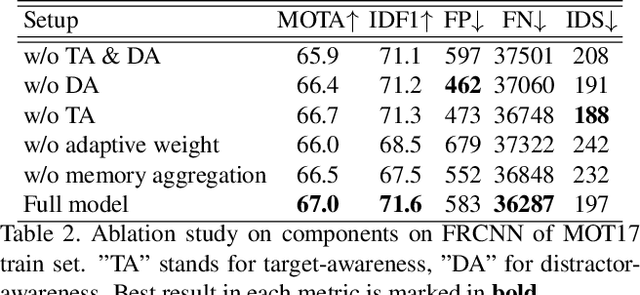
Modern online multiple object tracking (MOT) methods usually focus on two directions to improve tracking performance. One is to predict new positions in an incoming frame based on tracking information from previous frames, and the other is to enhance data association by generating more discriminative identity embeddings. Some works combined both directions within one framework but handled them as two individual tasks, thus gaining little mutual benefits. In this paper, we propose a novel unified model with synergy between position prediction and embedding association. The two tasks are linked by temporal-aware target attention and distractor attention, as well as identity-aware memory aggregation model. Specifically, the attention modules can make the prediction focus more on targets and less on distractors, therefore more reliable embeddings can be extracted accordingly for association. On the other hand, such reliable embeddings can boost identity-awareness through memory aggregation, hence strengthen attention modules and suppress drifts. In this way, the synergy between position prediction and embedding association is achieved, which leads to strong robustness to occlusions. Extensive experiments demonstrate the superiority of our proposed model over a wide range of existing methods on MOTChallenge benchmarks. Our code and models are publicly available at https://github.com/songguocode/TADAM.
 Add to Chrome
Add to Chrome Add to Firefox
Add to Firefox Add to Edge
Add to Edge